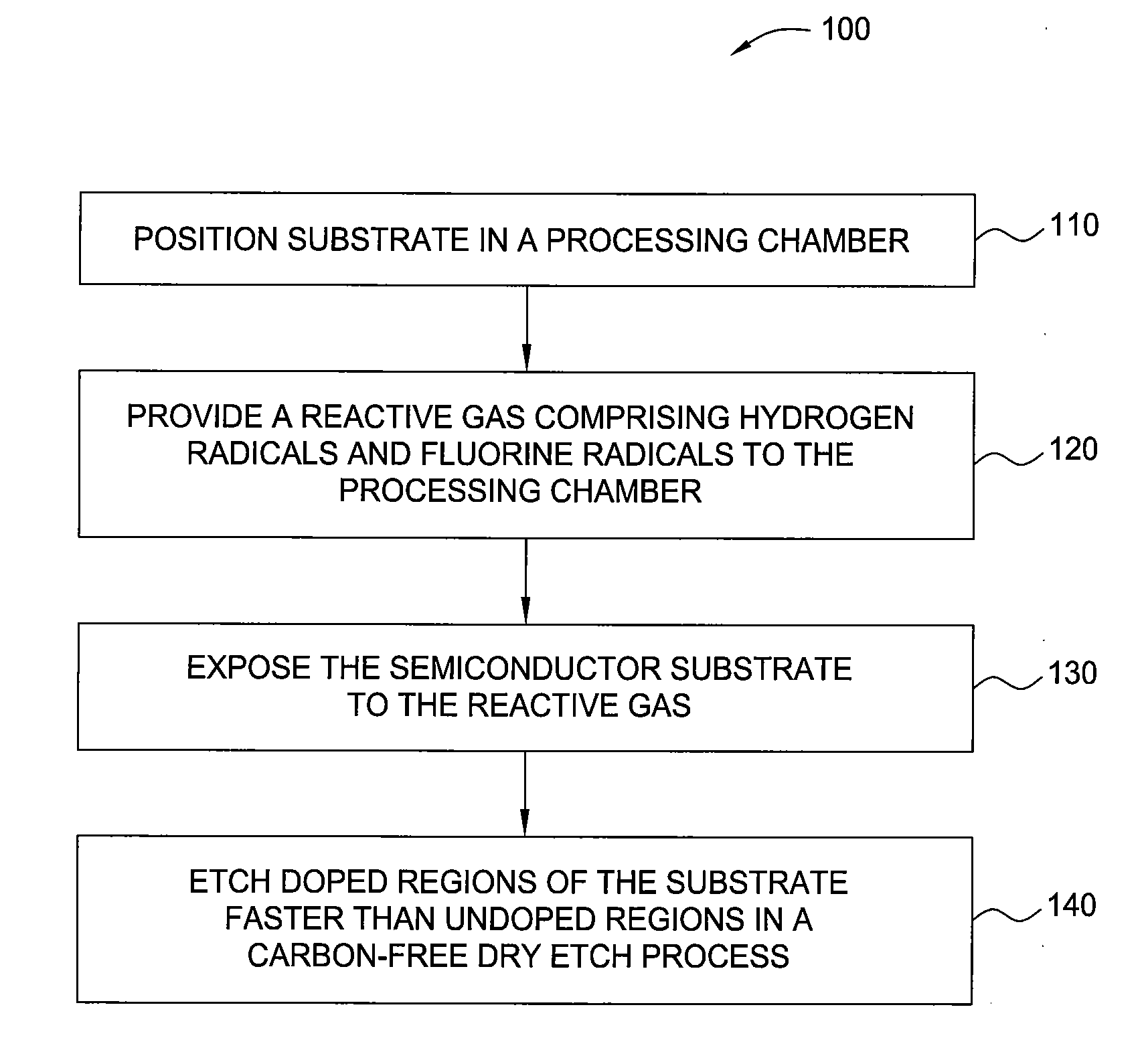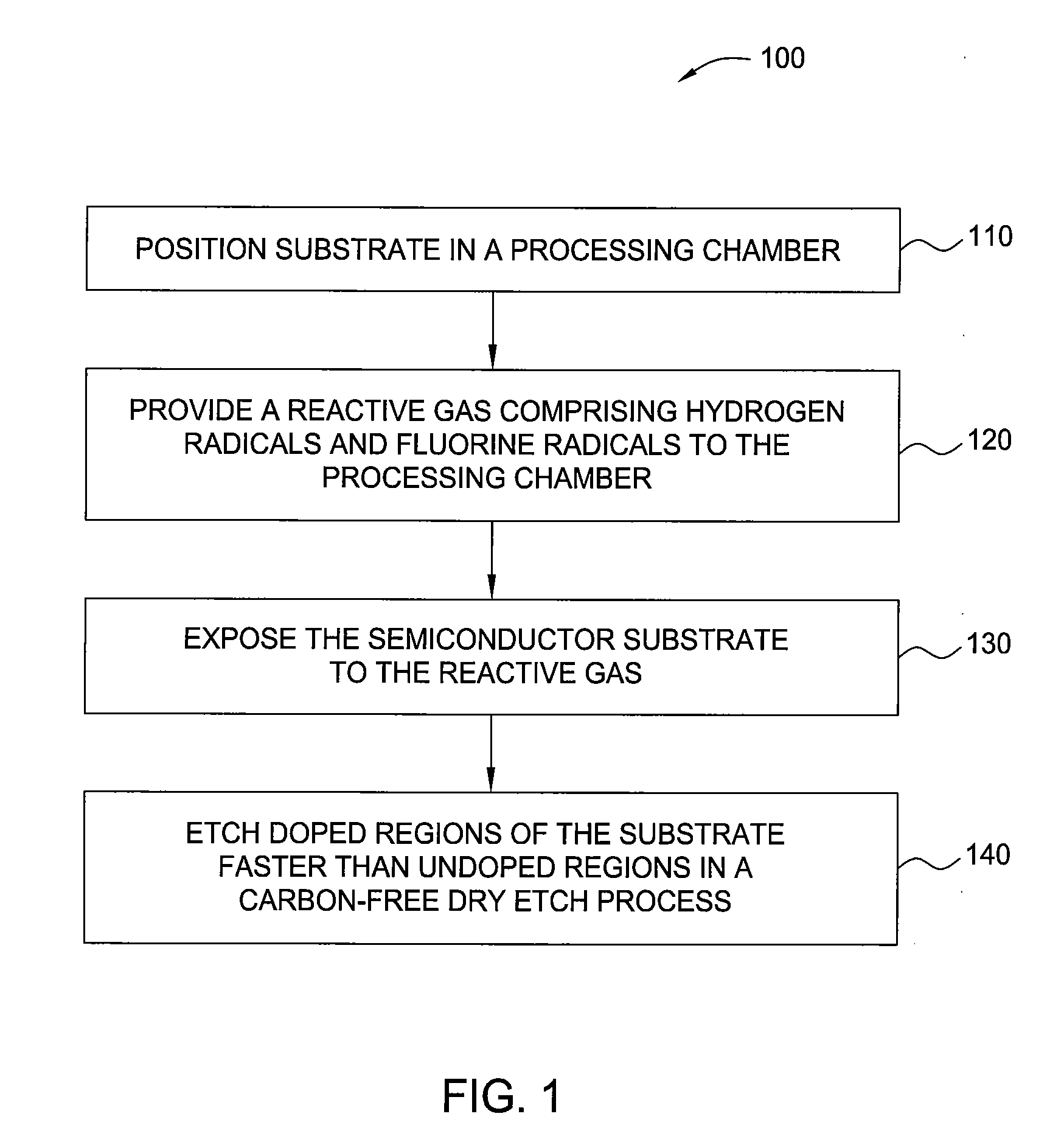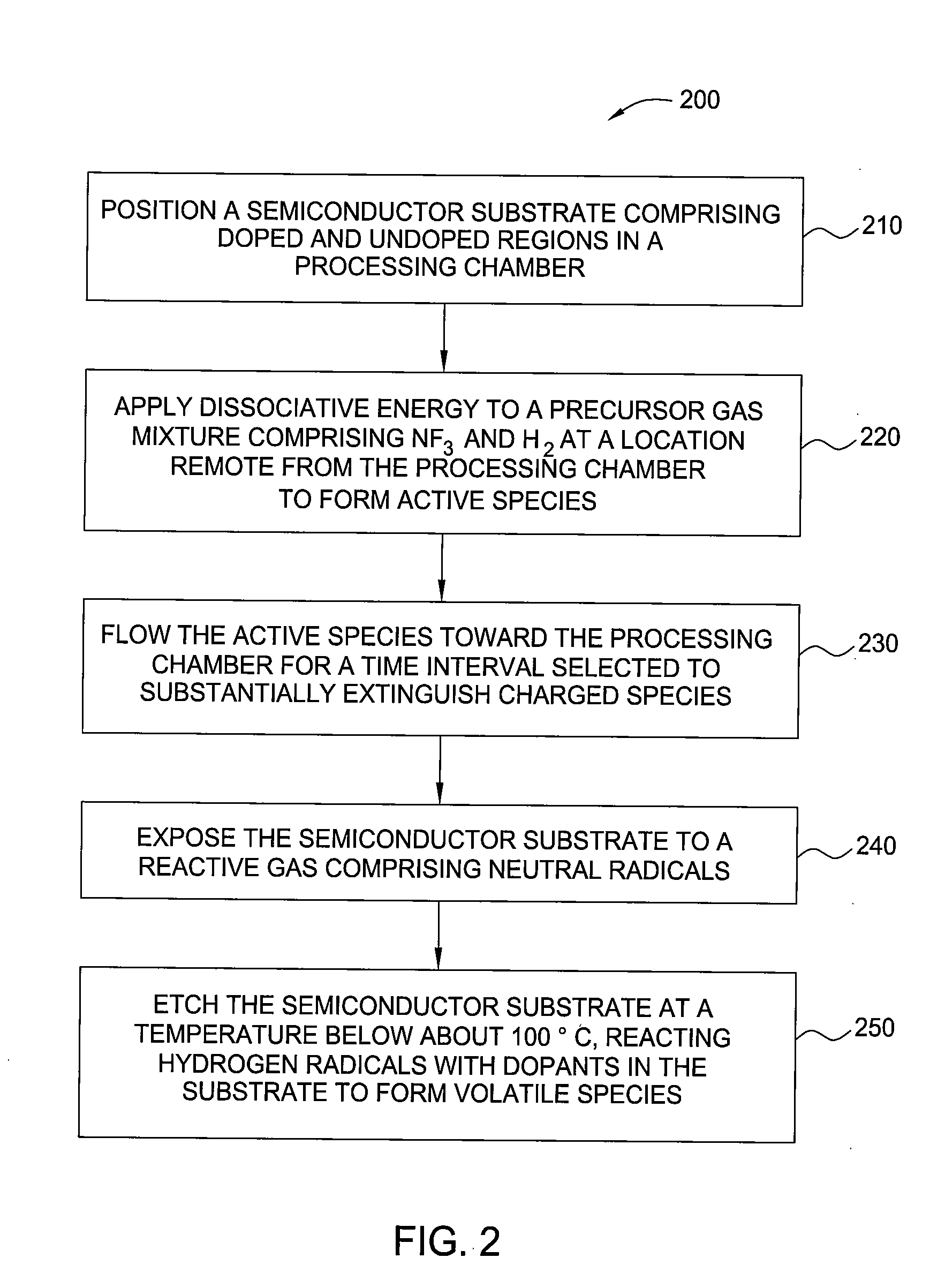Nf3/h2 remote plasma process with high etch selectivity of psg/bpsg over thermal oxide and low density surface defects
a technology of nf3/h2 and remote plasma, applied in the direction of electrical equipment, basic electric elements, electric discharge tubes, etc., can solve the problems of increasing the resistance of devices and degrading the properties of devices
- Summary
- Abstract
- Description
- Claims
- Application Information
AI Technical Summary
Benefits of technology
Problems solved by technology
Method used
Image
Examples
Embodiment Construction
[0017]Embodiments of the invention generally provide methods and apparatus for selectively etching semiconductor substrates having doped and undoped silicate regions. In one aspect, a method for selectively etching such substrates comprises disposing the semiconductor substrate in a processing chamber, providing a reactive gas mixture comprising hydrogen radicals and fluorine radicals to the processing chamber, exposing the semiconductor substrate to the reactive gas mixture, and etching the doped regions of the semiconductor substrate faster than the undoped regions. The semiconductor substrate may have doped and undoped silicate regions, or may have only a doped surface or an undoped surface to be etched. The doped regions or surface will generally be doped with boron or phosphorus atoms or ions, and may be formed by implanting dopants into a semiconductor surface or by deposition with in-situ doping, such as by an epitaxial deposition process.
[0018]FIG. 1 is a flow diagram summar...
PUM
 Login to View More
Login to View More Abstract
Description
Claims
Application Information
 Login to View More
Login to View More - R&D
- Intellectual Property
- Life Sciences
- Materials
- Tech Scout
- Unparalleled Data Quality
- Higher Quality Content
- 60% Fewer Hallucinations
Browse by: Latest US Patents, China's latest patents, Technical Efficacy Thesaurus, Application Domain, Technology Topic, Popular Technical Reports.
© 2025 PatSnap. All rights reserved.Legal|Privacy policy|Modern Slavery Act Transparency Statement|Sitemap|About US| Contact US: help@patsnap.com



